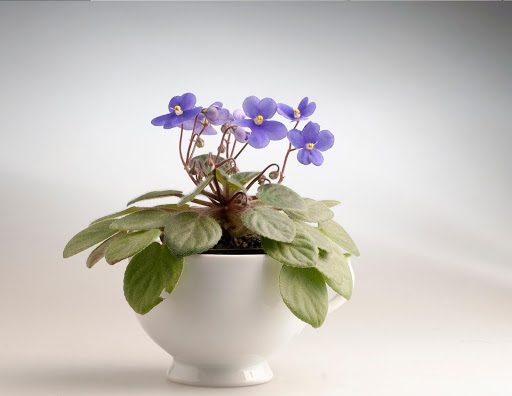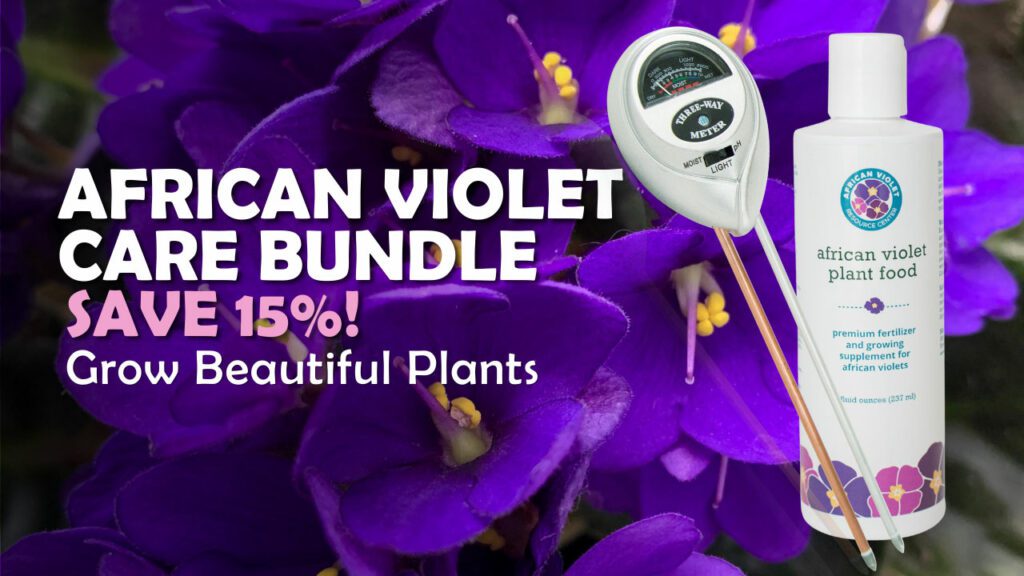Discover the 3 features your African violet pot should have to promote healthy growth and beautiful blooms.
Choosing a pot for your ordinary houseplants is no big deal, right? Plenty of houseplant varieties will happily adapt to any old pot and thrive in any old soil.
But your African violet plant needs a pot with a few special features to grow happily and maintain its rich foliage and big healthy blooms. In the wrong pot, your plant may not grow, bloom, or live for very long.
So it’s important to invest in the right pot for your African violet. The only question is: What are the most important features for an African violet pot?
Whether you’re new to growing African violets or you’re a seasoned professional, we’ll help you choose the perfect pot for your plant so it’ll thrive in your indoor garden.
Below, we cover the 3 most important features your African violet pot should have so when you’re browsing the rows of pots at your local nursery or scrolling the pages of pots available online, you’re sure to choose a pot that’ll set you up for growing success.
Feature #1: It allows for good drainage.
One of the most important features of your African violet’s pot is its drainage holes. In fact, buying a pot without drainage holes is perhaps the number-one mistake new African violet growers make.
African violets don’t do particularly well in pots that hold water because they keep the growing medium damp and encourage root rot. Needless to say, with consistently damp soil and root rot, your African violet won’t do well.
A pot with lots of drainage holes also goes a long way to keep you from over-watering your plant, since excess water will have plenty of avenues to escape the pot.
Professional Tip: Buy a pot with more than one drainage hole (or at least one). This will encourage water to run through the growing medium quickly and allow your plant’s roots to dry thoroughly.
Feature #2: Make it the perfect size.
Interestingly, the size of your African violet pot is essential to its health. If the pot is too small, then your African violet won’t produce new growth. On the other hand, if your pot is too big, your plant will have trouble blooming.
African violets do best when they are slightly pot-bound, so choose a pot that’s on the smaller side.
Professional Tip: If you have a standard African violet plant, your starter pot should be about 3-4 inches in diameter.
Feature #3: It’s the right material.
Just like all plant pots, African violet pots come in a variety of materials. Each type of pot has its own pros and cons. We’ll cover some of them here to streamline your purchasing process and help you settle on a pot material that’s just right for you and your African violet.
Glass African violet pots
Glass pots are mostly used for aesthetic purposes, since they come in a variety of striking colors. They can brighten a room, complement your African violet’s bloom color, and give your garden added character.
Glass pots, however, are typically heavy and more expensive than lightweight pots. You’ll also want to make sure you buy a glass pot with pre-drilled drainage holes since it’ll be difficult to add additional holes yourself without damaging or shattering the pot.
Plastic African violet pots
Plastic African violet pots are sunlight- and drainage-friendly. They’re easy to use, relatively inexpensive, and they allow for plenty of on-the-go modifications.
Most of the time, however, plastic pots are not very eco-friendly. They also have a reputation for being less durable than pots made of sturdier materials, so you may need to invest in more than one.
Ceramic African violet pots
Ceramic pots come in plenty of colors, designs, and glazes. These pots can be expensive, but your investment will go a long way to enhance your garden’s aesthetics.
Ceramic pots are durable, reusable, and unique. They don’t, however, always come with proper drainage holes or accompanying run-off dishes, so make sure you choose wisely.
Self-watering African violet pots
If you’re ready to automate your watering process, a self-watering pot might be the best choice for you. These pots are designed to keep your African violet watered without risking root rot or root damage from over-watering. They also come in handy if you’re worried about getting water on your African violet’s leaves, which can lead to irreversible dark spots on your plant.
Here’s a quick overview of how the self-watering pot works: The system includes a bottom pot, a cotton rope, and a top pot. The bottom pot is used as a water reservoir, and the cotton rope is used as the mechanism that draws water into the top top, where your African violet is potted. When your plant is thirsty, the cotton rope acts as something like a drinking straw. Your plant will draw water up into the potting mix as needed.
Professional Tip: When choosing an African violet pot, consider the pros and cons of each material type. Remember, the best African violet pots will provide good drainage, be the right size, and be a material that works best for you and your plant.
Bonus African Violet Growing Tip: Use a gentle fertilizer.
Once you’ve chosen the perfect pot for your African violet, you’ll want one more feature to encourage your plant to bloom: the right African violet fertilizer.
Our unique African Violet Plant Food is made especially for African violets and has their needs foremost in mind. It’s gentle so it won’t harm your plant’s roots, and it’s to be used every time you water, so your plant gets a steady dose of fertilizer to encourage healthy growth and bloom.
African Violet Plant Food is beginner-friendly and easy to use. Simply add a teaspoon of fertilizer to your water routine. No guesswork, no risk of burning your plant’s roots, and no counting days or weeks between fertilizing.
With the right African violet pot and the right fertilizer, you’ll be well on your way to nurturing an African violet plant that shows off its stunning blooms year after year.
For continued success, explore our other articles, visit our online shop, and connect with other African violet plant lovers in our Facebook group. There, you’ll find everything you need to know to grow your African violet big and strong so you can enjoy it for a long, long time.







